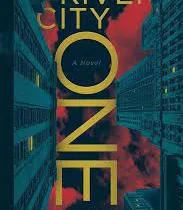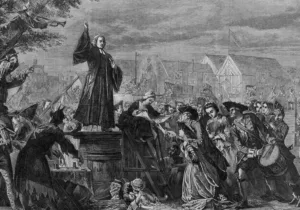A Review of Robert Hardman’s Biography of Queen Elizabeth II
Prime Minister Winston Churchill’s wreath on the bier of King George VI in 1952 was inscribed only “For Valour.” He knew that was the motto of the Victoria Cross. In this, Churchill paid fulsome tribute to his wartime King who “would never go.” That motto could as well be bestowed on King George VI’s daughter, Queen Elizabeth II.
The Robert Hartman official biography of the Queen is the Palace’s answer to the devastating portrait painted by the writers and producers of the anti-Queen series, The Crown. That TV drama reaches tens of millions of eager viewers. The cumulative effect of that falsification is as successful as Sergei Eisenstein’s classic propaganda film The Battleship Potemkin. Stalin approved this agitprop (agitation propaganda) movie’s faked episodes of the 1905 sailors’ revolt against Tsarist tyranny.
In Germany in 1934, Leni Riefenstahl’s Der Triumph des Willens (Triumph of the Will) insidiously pushed the Third Reich’s menu of lies. Lenin and Hitler both knew that the silver screen would move the masses as no book except the Bible or the Koran could. They were, alas, right.
Still, Robert Hardman’s candid but respectful work can change minds. It changed mine. He sets the record straight on issue after issue. To us as Americans, the Monarchy is seen mostly as soap opera. My new wife and I drove our infant son forty miles through the night to join our “Gram” to watch the Royal Wedding of 1981. Charles and Diana’s nuptials were broadcast live at 4 am Pacific time. Gram served tea and scones on her English bone china.
The Archbishop of Canterbury intoned that “on their wedding day, every couple is a royal couple.” Then he added: “A marriage that works is one that works for others.” We never forgot. Alas, the royal family’s marital troubles became tabloid fodder for years.
Year after year, Queen Elizabeth traveled the world seeking peace and reconciliation. With Britain’s colonial past and her continuing embroilment in Northern Ireland’s “Time of Troubles,” the Queen risked her life traveling to Belfast. She never shirked, never cringed. The helicopter journey to Ulster, however, brought her close to the brink. Still, she kept the stiff upper lip for which her people are famed, and she flew.
There are too many poignant parts of this long royal tale to do them all justice. Young Prince Andrew flew his Sea King helicopter in the Falklands War. He acquitted himself nobly there. He said “I went to war a boy; I came home a man.” Stirring stuff. So much more tragic now to have him stand credibly accused of rape, to live on in infamy. God seeks the death of no man, but warriors might be forgiven for thinking Andrew would have been more blessed to have fallen in combat in 1982.
The Queen is the heroine of the Commonwealth story. It was her way of conveying Britain honorably from an Empire to a respected partner of a world-wide community. England gave these peoples language, law, and for many the King James’ version of the Bible. Conflicts over race always threatened the Commonwealth. Elizabeth II was determined to hold the too-often fractious family of nations together. Prime Minister Margaret Thatcher almost clashed with her revered monarch over sanctions against the apartheid regime in South Africa. Until the end of her days, the Queen defended her pariah treatment of Ian Smith’s white minority regime in Rhodesia. Racism was never to be countenanced by this Queen.
There is no way to view Robert Mugabe’s decades-long tyranny after Ian Smith in the African-majority state, Zimbabwe, as a moral success. That man of blood killed more than 20,000 of his fellow Zimbabweans. Do their Black lives matter?
The Queen was lampooned as “the Whitest woman in the world” by American comics, themselves White. So unfair. No White monarch has ever struggled so hard or so long to advance a multi-racial society at home and a fraternal Commonwealth abroad. Her deep friendship with Nelson Mandela is itself the stuff of legend. As he himself was descended from a King, Mandela alone could call her “Elizabeth.” She warmly embraced our President Barack Obama and First Lady Michelle.
One of the important characters in this book that disappeared before the Queen Mum, before the Queen’s sister Princess Margaret, was the beloved HMY Britannia. This royal yacht had logged over one million nautical miles before she was decommissioned. Hardman’s book lets us see what a central role this magnificent vessel had played in the very idea of Britishness. The cheese-paring accountants of Whitehall must never have been to sea to permit such a cost-and-effect mindset to prevail over Britannia rules the Waves. Former Prime Minister Tony Blair confessed his long regret. He’d never been on board—until his New Labour government had decided to de-commission her.
For centuries, the Royal Navy had protected our American Westward expansion, even as it led a moral crusade against the heinous Atlantic Slave Trade. Britannia’s presence at the handover of Hong Kong was a tragic episode in 1997. PLA tanks led the parade of Chinese Communist rulers into the former Crown Colony. Four million people’s liberty was lowered, along with the Union Jack.
It is from Robert Hardman’s careful research that we learn of the early and relentlessly vicious media coverage by Fleet Street of the Queen’s reaction to the death of Princess Diana. The Queen immediately called for a Memorial service at Balmoral. Journalists quickly seized upon the liturgy not mentioning the dead Princess of Wales by name. These reporters may never have attended a Church of Scotland funeral, or they would have known they never name the dead. The Helen Mirren movie The Queen and the Netflix series The Crown used early reportage to paint Elizabeth as a cold fish. With no chips.
Hardman provides a hilarious scene of the 1991 visit of the Queen to the White House. I stood behind the rope line fifty feet from the President and his royal guest. I could see someone needed to haul out the red carpeted box on which the Queen should stand and lower the 6’3” George H.W. Bush’s microphone. “Joe! The BOX!” I wanted to yell to our Chief of Protocol. But I knew I’d be tackled by Scotland Yard or Secret Service, or both. The episode was forever after known as “The Talking Hat” by the Palace’s loyal staff.
I’m especially grateful to this portrait of the Warrior Queen. She was one of our now passing members of that Very Great Generation of World War II. She had seen all the Queen’s horses and all the Queen’s men targeted by IRA bombs in London. Her uncle, Lord Mountbatten, was blown up off Northern Ireland by them.
She had faced eight assassination attempts, including a near brush with death in New Zealand. An intruder with a broken saucer that cut his foot left blood all over her royal bedchamber. She had coolly chatted up the disturbed young man as she calmly pressed her alarm button. This was the stuff of Elizabeth I at Tilbury in 1588. “I know I have the body of a weak woman, but I have the heart of a king and a king of England, too!”
Robert Hardman was able to defuse many of the bombs thrown by the writers of The Crown. Many of its fictional episodes are not only untrue, they defame an entire family. Even so, there is no defense for the Queen’s second son, Andrew. His central role in a sex trafficking ring has covered the name and the fame of the royals with tar.
When Prince Charles came to San Francisco, we Coast Guard officers stood at attention as his Honor Guard. The chartered jet, however, landed 5-7 minutes early and headed out to the Bay. The IRA threatened to bomb him. Were we human shields? The jet turned around, bearing the Union Jack and the Royal Standard. They flew outside the cockpit.
We remembered His Royal Highness’ arrival, and admittedly, some of us resented being subjected to that short interval of terror. Now, I can confess, the Queen and the Prince’s fearless lives fully embody Hemingway’s definition of courage—grace under pressure. The Queen and the King have shown all of us how to wear the brave face.
Robert Hardman had the last, best line at the Queen’s state funeral. He noted she was the senior British figure most comfortable sharing her faith in Jesus Christ as “her Lord and Saviour.” Then, he paid her the ultimate tribute, quoting Elizabeth I:
Ye may have a greater prince but ye shall never have a more loving prince.






 Sponsor a student for Christianity & National Security 2024
Sponsor a student for Christianity & National Security 2024